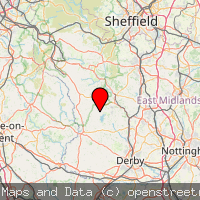Carsington Pasture Cave
Excavation
A.T. Chamberlain, 1998-1999.
Curation
Buxton Museum and Art Gallery.
Burials
MNI: 34 (16 adults, 18 juveniles).
Finds
Flint flake, perforated bone pin, worked antler, cutmarked human bones, prehistoric pottery, Roman artefacts, animal bones.
Dates
| Period | Reliability |
|---|---|
| Iron Age | 14C date obtained directly on human remains |
| Neolithic | 14C date obtained directly on human remains |
14C
4820 bp (UBA-29003) on human bone; 4808 bp (UBA-29004) on human bone; 3980 bp (OxA-9930), 2435 bp (OxA-9806) on human bone; 5145 bp (OxA-9936) on animal bone.
Additional Notes
The dates fall into the Late Neolithic and into the Iron Age.
External References
| Derbyshire Cave Registry | 343 |
| National Monuments Record | SK 25 SW 40 |
| Sites and Monument Record | 3489 |
Bibliography
Barker, I. & Beck, J.S. (2010) Caves of the Peak District. Hucklow Publishing, Derbyshire.
Booth, T. (2021). Carsington Pasture Cave. Current archaeological summary. Pegasus Caving Club
Brace, S. et al. (2019) Ancient genomes indicate population replacement in Early Neolithic Britain. Nature Ecology & Evolution 3: 765–771.
Ford, T.D. (1977) The caves of the Brassington and Parwich area. In Ford, T.D. (ed.) Limestones and Caves of the Peak District. Norwich, Geo Books, pp. 435-444.
Papakonstantinou, N. (2009) Human Skeletal Remains from Neolithic Caves in the Peak District: an Osteoarchaeological and Taphonomic Approach. Unpublished MSc dissertation, Department of Archaeology, University of Sheffield.
Tune, R.N. (1967) Field meeting to Snake Mine and Wester Hollow; 25th June 1967. Bulletin of the Peak District Mines Historical Society 12: 19-23.
Article Author Graham Mullan

